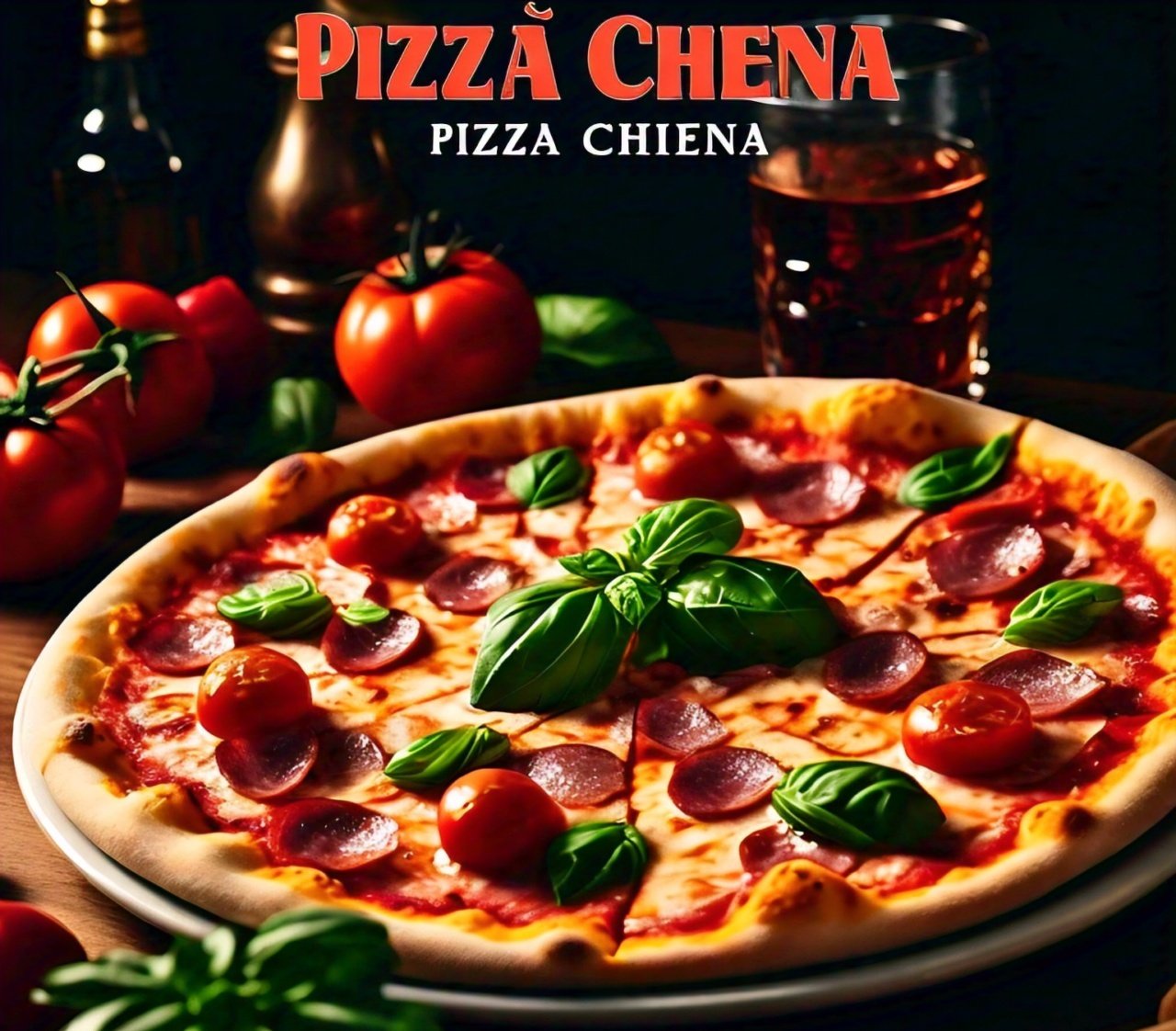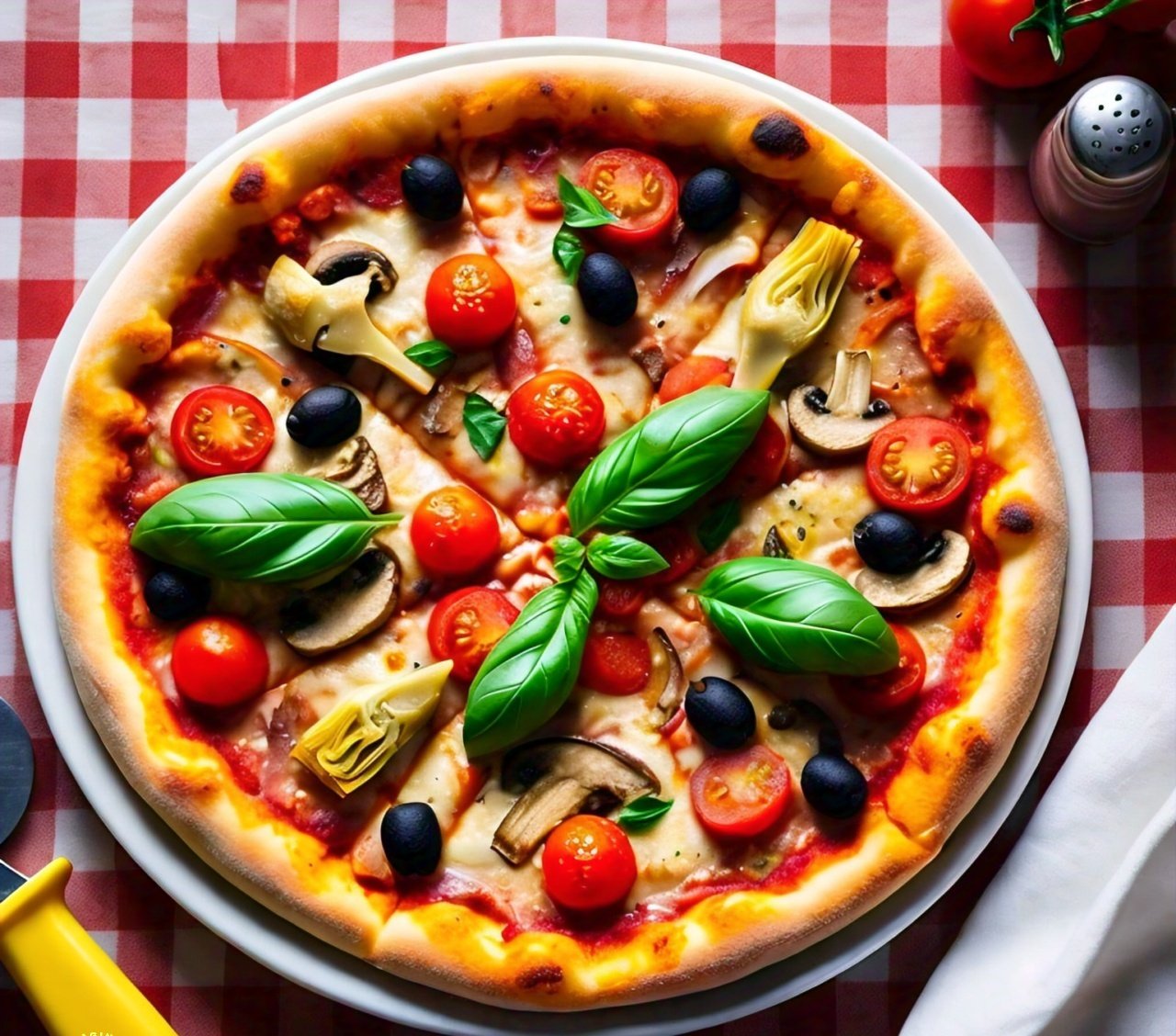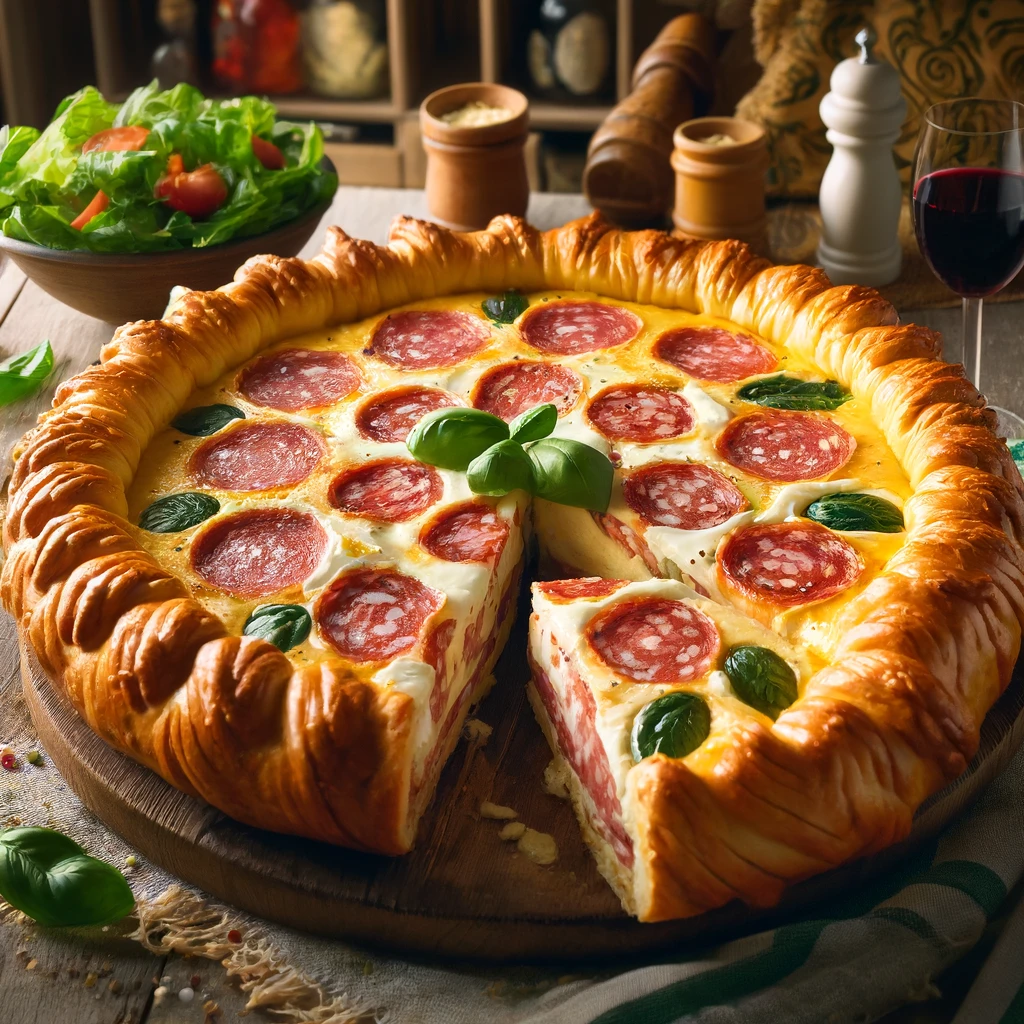The Rich History of Pizza Chiena
Pizza Chiena, also known as Pizza Rustica, is deeply embedded in the culinary traditions of southern Italy, particularly in Naples and the Campania region. This savory pie is traditionally made during Easter, symbolizing the end of Lent and the celebration of resurrection and renewal. The name “Pizza Chiena” translates to “full pizza” or “stuffed pizza,” reflecting its generous and hearty filling. The dish perfectly represents Italian hospitality and the emphasis on communal meals, as it is often prepared in large quantities to be shared with family and friends during Easter festivities.

Origins in Italian Culture
The origins of Pizza Chiena are steeped in Italian culture and history. This dish dates back to centuries-old customs where families would gather to prepare elaborate meals for Easter. Historically, Pizza Chiena was made on Good Friday and consumed throughout the Easter weekend, signifying the end of fasting and penance observed during Lent. The ingredients used in Pizza Chiena—such as eggs, various meats, and cheeses—were chosen for their richness and ability to create a filling and celebratory meal. This tradition highlights the Italian ability to turn simple, locally available ingredients into a culinary masterpiece that stands the test of time.
Evolution of the Recipe
Over the years, the recipe for Pizza Chiena has evolved, with each family adding their own unique touches and variations. Originally, the filling consisted of readily available ingredients like cured meats, hard-boiled eggs, and various cheeses. As time passed and culinary techniques advanced, more luxurious ingredients were incorporated, such as different types of salami, ricotta, and even spices that were introduced through trade. This evolution reflects the dynamic nature of Italian cuisine, where recipes are adapted and refined across generations, making each family’s version of Pizza Chiena distinct and special.
Family Traditions and Celebrations
Preparing Pizza Chiena is more than just cooking; it is an event that brings families together. In many Italian households, making Pizza Chiena is a cherished tradition passed down from grandparents to grandchildren. The process often involves multiple generations working together in the kitchen, each person contributing to different stages of preparation—from kneading the dough to layering the filling. This communal effort strengthens family bonds and preserves the cultural heritage associated with this beloved dish. During Easter, the aroma of freshly baked Pizza Chiena fills homes, creating an atmosphere of warmth, celebration, and shared joy.
Essential Ingredients for Pizza Chiena
To make an authentic Pizza Chiena, you need a mix of high-quality meats, cheeses, and other ingredients. The traditional ingredients include a variety of cured meats such as salami, prosciutto, and ham. These meats should be finely chopped or sliced to ensure they blend well into the filling. Cheese is another vital component, with a mix of ricotta, mozzarella, and provolone providing a rich, creamy texture. Eggs are essential as they serve as the binding agent that holds the filling together. Additionally, the dough requires all-purpose flour, yeast, olive oil, and water. These elements combine to form a robust flavorful, satisfying, and celebratory dish.

Making the Perfect Dough
The dough is the foundation of any good Pizza Chiena; making it from scratch is worth the effort. Start with all-purpose flour, yeast, olive oil, and water. The yeast is activated by dissolving it in warm water with a pinch of sugar, allowing it to foam. The flour is then mixed with the yeast mixture, olive oil, and some salt to form a dough. It is important to knead the dough until it becomes elastic and smooth.Once the dough is prepared, it should be left to rise in a warm place until it doubles in size, ensuring a light and airy crust.
Preparing the Filling
Ingredients for the filling include a variety of cured meats such as salami, prosciutto, and ham, along with cheeses like ricotta, mozzarella, and provolone. Freshly cracked eggs are essential for binding the filling together. To prepare the filling, chop the meats into small, bite-sized pieces and combine them with the cheeses and beaten eggs in a large mixing bowl. Season with salt, pepper, and any additional herbs or spices, such as parsley or black pepper, to taste. The goal is to create a well-mixed filling that cooks evenly and tastes delicious.
Preparing the Dough
Preparing the dough is the first step in making Pizza in China. Begin by proofing the yeast: dissolve a packet of active dry yeast and a pinch of sugar in a cup of warm water, letting it sit until frothy. Create a well in the center of the flour mixture and pour in the yeast mixture along with 1/4 cup of olive oil. Mix until a shaggy dough forms, then transfer it to a floured surface and knead for about 10 minutes until it is smooth and elastic. Place the dough in an oiled bowl, cover it with a damp cloth, and let it rise in a warm place for 1-2 hours or until has doubled.
Assembling the Filling
Assembling the filling requires a mix of cured meats, cheeses, and eggs. Start by finely chopping 1/2 pound each of salami, prosciutto, and ham. In a large bowl, combine the meats with 2 cups of ricotta cheese, 1 cup of shredded mozzarella, and 1 cup of grated provolone. Crack 6 large eggs into the mixture, and add 1/2 cup of grated Parmesan cheese for extra flavor. Season with salt, freshly ground black pepper, and a handful of chopped parsley. Mix everything thoroughly to ensure an even distribution of meats and cheeses. This rich, savory filling will be the heart of your Pizza China.
Baking the Pie
Baking the pie is the final step. Preheat your oven to 350°F (175°C) while you assemble the pie. Roll out one portion of the dough on a floured surface to fit your baking dish, allowing for some overhang. Press the dough into the greased baking dish, then spoon the filling evenly into the dough-lined dish. Roll out the second portion of dough and place it over the filling, trimming any excess and crimping the edges to seal. Make a few tiny incisions in the upper crust to release the trapped steam. Brush the top with an egg wash from 1 beaten egg and 1 tablespoon of water to achieve a golden, shiny finish.

Regional Differences
Pizza Chiena, while a traditional Italian dish, varies significantly across different regions of Italy. In Naples, where it originated, the focus is often on a hearty combination of local cured meats and a blend of cheeses that reflect the region’s dairy traditions. Neapolitan versions typically include spicy soppressata and smoky provolone, giving the pie a distinctive Southern Italian flavor profile. In contrast, regions like Abruzzo and Calabria might use more locally available ingredients, such as pecorino cheese and regional sausages, resulting in a different taste and texture. These variations highlight the adaptability of Pizza Chiena to local tastes and ingredient availability, making each version unique and reflective of its origin.
Modern Twists
Modern twists on Pizza China have emerged as chefs and home cooks experiment with new ingredients and techniques while still honoring the traditional roots of the dish. Some modern versions incorporate fresh vegetables like spinach, artichokes, or roasted red peppers to add a splash of color and extra flavor. Others might experiment with different types of dough, such as whole wheat or gluten-free, to cater to dietary preferences and health considerations. Additionally, innovative fillings like smoked salmon and cream cheese or even spicy chorizo can offer a contemporary twist on the classic recipe, appealing to those looking for a novel culinary experience while still enjoying the essence of Pizza China.
Vegetarian Alternatives
For those who prefer a vegetarian option, Pizza Chiena can be adapted to exclude meats while delivering a delicious and satisfying dish. A vegetarian Pizza Chiena might feature a rich filling made from various cheeses, including ricotta, mozzarella, and provolone, combined with fresh vegetables like spinach, bell peppers, zucchini, and mushrooms. Adding herbs such as basil, oregano, and thyme can e the flavor, while sun-dried tomatoes provide a tangy, robust note. The vegetarian version retains the traditional elements of a creamy, cheesy filling and a flaky crust, making it a delightful alternative for non-meat eaters who want to enjoy this beloved Italian pie.
Best Ways to Serve
Serving Pizza Chiena involves a bit of presentation, highlighting its rich, savory flavors. The pie is typically sliced into generous wedges, showcasing the layered filling of meats, cheeses, and eggs. It’s best served warm, allowing the cheese to be perfectly melty and the crust to maintain its flaky texture. Pairing the pie with a simple green salad dressed in a light vinaigrette can help balance the dish’s richness. Additionally, serving Pizza Chiena as part of a festive spread with other Italian favorites like antipasti, olives, and fresh bread can create a well-rounded meal that delights the senses.

Pairing with Beverages
Pairing Pizza Chiena with the right beverages can enhance its flavors and create a memorable dining experience. Traditional Italian wines are an excellent choice; a robust red wine such as Chianti or Barbera complements the rich, meaty filling and cuts through the cheese’s creaminess. A crisp Pinot Grigio or a lightly oaked Chardonnay can provide a refreshing contrast for those who prefer white wine. If you’re serving Pizza Chiena at a casual gathering, consider offering Italian craft beers or a light lager, which pair well with the pie’s hearty flavors. Non-alcoholic options like sparkling water with a twist of lemon or a tangy Italian soda can also be excellent companions to this savory dish.
Storing and Reheating Leftovers
Storing and reheating leftovers of Pizza Chiena is simple and ensures you can enjoy this delicious pie even after the initial serving. To store leftovers, wrap individual slices tightly in plastic wrap or aluminum foil and place them in an airtight container.They will keep for three to four days in the refrigerator. For longer storage, consider freezing the slices; wrap them securely to prevent freezer burn, and they can last for up to 2-3 months. When reheating, preheat your oven to 350°F (175°C) and place the slices on a baking sheet. Cover them with aluminum foil to prevent the crust from drying out, and bake for about 15-20 minutes or until heated through.
Caloric Content
Pizza Chiena is a hearty and rich dish, and its caloric content reflects its substantial ingredients. A typical serving of Pizza Chiena, roughly one-sixth of the pie, can range from 400 to 600 calories depending on the specific ingredients and portion size. The high-calorie content is primarily due to the generous amounts of cheese, cured meats, and eggs, which are all dense in calories. The crust, made from a rich dough, also contributes to the overall calorie count. While it is not a low-calorie food, Pizza Chiena is meant to be enjoyed as a special treat, particularly during festive occasions like Easter.
Macronutrient Breakdown
The macronutrient breakdown of Pizza Chiena highlights its rich, indulgent nature. Thanks to the meats and cheeses, each serving typically contains a significant amount of protein. You can expect about 20-30 grams of protein per serving, which substantially helps with muscle maintenance and satiety. The fat content is also high, around 25-35 grams per serving, due to the cheese, meats, and the oil in the dough. This includes saturated fats from animal products and unsaturated fats from olive oil. Carbohydrates come primarily from the crust, containing 30-40 grams each serving. The crust provides energy, while the protein and fats contribute to the dish’s hearty, satisfying qualities.
Health Benefits
Despite its high caloric and fat content, Pizza Chiena does offer some health benefits, especially when consumed in moderation as part of a balanced diet. The high protein content supports muscle repair and growth and helps keep you feeling full longer. The cheese and eggs provide essential vitamins and minerals, such as calcium, phosphorus, and vitamin D, which are crucial for bone health. The olive oil in the dough is a source of healthy monounsaturated fats, which can help maintain heart health. Additionally, if you incorporate vegetables into the filling or serve it with a side salad, you can boost the dish’s nutritional value with fiber, vitamins, and antioxidants.
Common Mistakes to Avoid
When making Pizza Chiena, several common mistakes can affect the final result. One frequent error is not allowing the dough enough time to rise. Rushing this process can result in a dense, tough crust rather than a light and airy one. Another mistake is overfilling the pie. While it’s tempting to pack in as much filling as possible, too much can cause the pie to overflow or become soggy. Finding a balance and ensuring the filling is evenly distributed is important. Using a thermometer to check that the internal temperature reaches at least 160°F (70°C) can help ensure it’s thoroughly cooked.
Enhancing Flavor
Enhancing the flavor of your Pizza Chiena can take it from good to exceptional. Start with high-quality ingredients, especially when it comes to meats and cheeses. Fresh, flavorful cured meats and cheeses will make a significant difference. Adding fresh herbs like basil, parsley, or oregano to the filling can introduce a burst of freshness and complexity. Additionally, incorporating sautéed onions or garlic into the filling can provide a subtle sweetness and depth of flavor. Using a variety of cheeses, such as a combination of sharp provolone, creamy ricotta, and melty mozzarella, can create a more complex and rich filling. 
Pizza Chiena
Presentation Tips
Presentation can elevate the enjoyment of Pizza Chiena, making it look as good as it tastes. For a visually appealing pie, ensure the dough is rolled out evenly and the edges are neatly crimped or fluted. Creating a few decorative slits in the top crust not only allows steam to escape but also adds a professional touch. After baking, let the pie cool slightly before slicing to allow the filling to set and make clean, attractive slices. Serve each slice on a plate with a garnish of fresh herbs like parsley or basil for a pop of color. Accompanying the pie with a simple green salad or a selection of antipasti can enhance.
FAQ
What is Pizza Chiena made of?
Pizza Chiena is made of cured meats, such as salami, prosciutto, and ham, combined with cheeses like ricotta, mozzarella, and provolone. The filling is bound together with eggs and encased in a dough made from flour, yeast, olive oil, and water.
How long does it take to prepare Pizza Chiena?
Preparing Pizza Chiena can take several hours. The dough needs about 1-2 hours to rise, and assembling the filling and pie can take an additional 30-45 minutes. Baking time is approximately 60-75 minutes.
Can Pizza Chiena be made ahead of time?
Yes, Pizza Chiena can be made ahead of time. You can prepare it the day before and keep it chilled in the fridge. This allows the flavors to meld together, and it can be reheated before serving.
What are some variations of Pizza Chiena?
Variations of Pizza Chiena include adding vegetables such as spinach, artichokes, or roasted red peppers. Some versions may use different types of meats or cheeses, and there are also vegetarian alternatives that omit the meats entirely, focusing on a variety of cheeses and vegetables.
How should Pizza Chiena be stored?
Pizza Chiena should be stored in an airtight container in the refrigerator for 3-4 days. It can also be tightly wrapped and frozen for longer storage.
Can Pizza Chiena be frozen?
Yes, Pizza Chiena can be frozen. Tightly wrap each slice in aluminium foil or plastic wrap before putting it in an airtight container. For two to three months, they can be kept in the freezer.
What is the best way to reheat Pizza Chiena?
The best way to reheat Pizza Chiena is in the oven. Preheat the oven to 350°F (175°C), place the slices on a baking sheet, cover with aluminum foil, and bake for about 15-20 minutes or until heated through. This helps maintain the crust’s texture and the filling’s flavor.
Is there a vegetarian version of Pizza Chiena?
Yes, there is a vegetarian version of Pizza Chiena. It typically includes a mix of cheeses such as ricotta, mozzarella, and provolone, along with fresh vegetables like spinach, bell peppers, zucchini, and mushrooms. Herbs and seasonings enhance the flavor, making it a delicious alternative for vegetarians.

